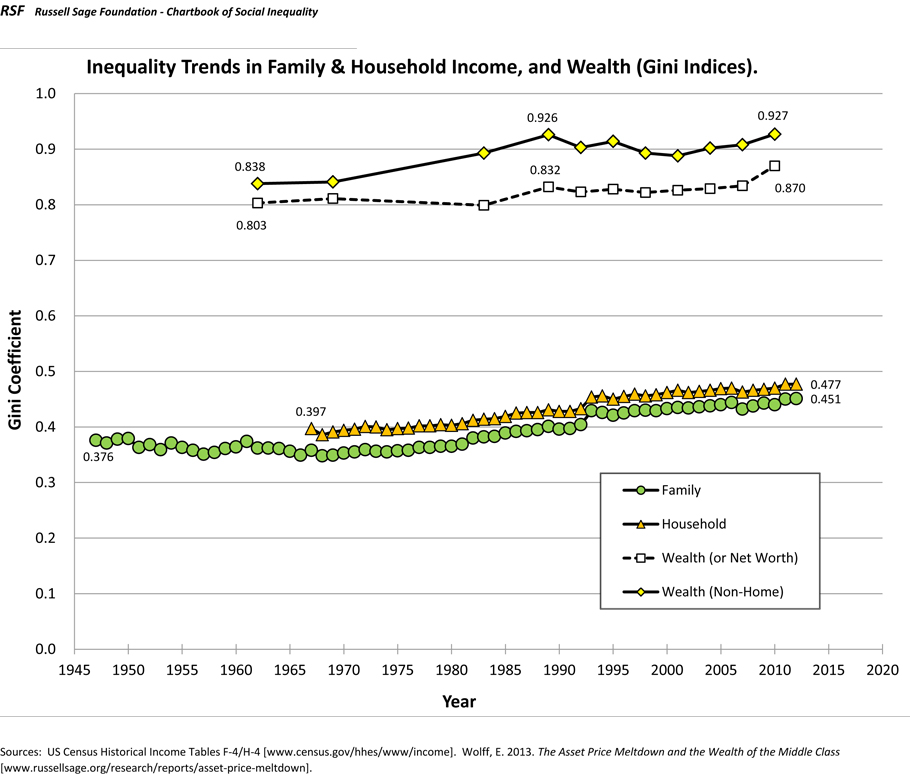Gini Index of Inequality: Family Income (1947-2009), Household Income (1967-2009), and Wealth (1983-2007)
The Gini Coefficient is a measure of income dispersion where 0 means all individuals have the same income and 1 means that one person has all the income. Census data suggest that both family and household income inequality have been rising steadily since the mid to late 1960s. Analyzing data from the Survey of Consumer Finances, Wolff (2010) has shown similar upward trends in wealth (net worth). When homes, a primary vehicle for increasing wealth for middle and lower class households is removed (non-home wealth), the level of inequality as measured by the Gini increases considerably.

